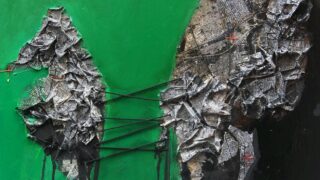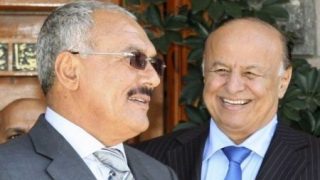Earlier this year, Yemen was declared a federal state. This was the most prominent outcome of the National Dialogue Conference, which had stated that the central state was one of the main factors of the deterioration of the country. The objection by intellectuals and activists (and even politicians) did not prevent the continued enforcement of this urgent decision, with the blessing of the international community and the regional states sponsoring the Gulf Initiative for Yemen, the frame of reference for the ongoing situation in Yemen.
After a wide controversy about the number of regions that should make up the new federal state, President Abed Rabbo Mansour Hadi issued a decree establishing a 21-member committee, headed by him and tasked with determining the number of regions. This committee announced its decision, which is not subject to any challenge (in violation of the Gulf initiative and the outcomes of the National Dialogue, specifying that such decisions must be subject to a referendum before approval), which specified the division of Yemen into six regions, two of which are in the south and four in the north. Even though it determines the fate of Yemen’s 25 million people, this decision was reached after only a week of work. Did it take into account geographical, economic, cultural, demographic and historical factors? It was a political decision par excellence.
The south was split into two regions, Hadramout and Aden, while the north was split into four regions, Sabaa, al-Jund, Azal and Tihamah. Al-Safir Al-Arabi is publishing successive articles discussing the specificities of each one of those regions. After Azal in the previous issue, this article tackles the Aden region.
The Aden region is composed of the city of Aden, as well as the provinces of Lahej, Abyan, and al-Dhale. It stretches over a surface area of about 7% of the total area of the Republic of Yemen. Its population accounts for approximately 10% of the total Yemeni population, according to the General Census of Population and Houses in 2004.
Integrated development resources
The Aden region boasts the qualifications of a full state. Previously the capital of the People's Democratic Republic of Yemen, the city of Aden has all the facilities and infrastructure necessary to build a state government, not just a regional government. Therefore, it will not suffer the potential ailments of some other regions in terms of lack of facilities needed by their governments. The region has the required development resources in industry, trade, tourism, agriculture and fisheries. At the level of foreign trade, throughout its history, Aden has been open to the foreign world. When Capt. S.B. Haines occupied the Port of Aden in February 1839, most of its traders had been foreigners. The city preserved its commercial standing during the rule of the British administration. The first chamber of commerce in the Arabian Peninsula was established in Aden in August 1886. After the expansion of Tawahi Port in the early 1950s, Aden became the most important economic region in the Middle East. Its port was ranked second most important port in the world after New York, and the third most important port in terms of loading and unloading among Commonwealth countries, after London and Liverpool. The Yemeni unification took place on May 22, 1990, and at that time the people of Aden hoped their city would regain the commercial standing it had lost during the period of 1967-1990 when the state in the south monopolized foreign trade.
Although the government declared the port of Aden a free zone in 1993, misadministration and corruption prevented the restoration of the port’s commercial role. In addition to the port, the Aden region has fishery resources in the province of Abyan, and to some extent in the province of Lahej. Moreover, Tuban Delta in Lahej and Abyan Delta are deemed the most fertile agricultural lands in Yemen. They have been known since the 1940s for the cultivation of long staple cotton, grains, tobacco and fruits, especially since the climate of this region — which is similar to that of the regions of Hadramout and Saba — is not suitable for the cultivation of qat, except in northern parts of al-Dhale province.
The region has great potential for tourism, in particular beach tourism in the city of Aden, where the sea and the mountain are adjacent and a number of sandy beaches can be found. This qualifies Aden to hold a prime location on the tourism map of Yemen and the Arabian Peninsula.
Cultural specificity
Aden was a commercial city open to the world. In addition to its Arab population, it hosted immigrants from various countries of the world: Indians, Pakistanis, Iranians, Egyptians, Somalis, and Africans. The city represented a cultural fusion. These immigrants relinquished their national, tribal and village identities and took on the Aden identity. Instead of community organizations (to which individuals are affiliated based on kinship), civil organizations whose members are governed by a relationship based on shared interests or values were established. Those who came to Aden from other Yemeni regions abandoned their local accents and replaced them with the accent of Aden. This city is the only one in Yemen with its own accent that reflects its cultural diversity, contrary to other cities in the north and the south, including the capital Sanaa, where the populations preserve their original local accents even after decades.
The city of Aden had a powerful influence in its tribal and rural surrounding without being influenced by it, as is the case in the cities of the north. Therefore, the values of modernity were transferred from the city to the villages and cities of the south. This shaped a southern culture different from the tribal culture in the north. Tribes in the south were no longer protectionist armed organizations; they turned into political and development groups subject to the rule of law rather than custom. The first constitution in Yemen was the Constitution of the Lahej Sultanate, and the first form of power-sharing was Dthina Confederation. The Yafai tribes became organized and the relationship between the sheikh and the tribesmen was governed in a quasi-democratic manner. In this region, people chose the sheikh, who was not imposed by a central authority or appointed by virtue of inheritance.
Systematic destruction
According to the unity agreement and proclamation of the Republic of Yemen, the best experiences of South Yemen and North Yemen should be retained. However, the regime of former President Ali Abdullah Saleh did not respect this principle. After the victory in the war of summer 1994, he adopted a project for the cultural, social, economic and political destruction of the city of Aden and the south in general.
He started this project by appointing what he called Sheikh of Sheikhdom of Aden. It constituted a deliberate and unprecedented targeting of the city's cultural specificity. No other Yemeni city, whether in the north or the south, has ever known this title, and no one has ever been appointed with this title at any historical period, with the exception of Sheikh Abdullah bin Husayn bin Nasser al-Ahmar, who was described (during the rule of Saleh) as the Sheikh of Sheikhdom of Yemen. This appointment has no political or administrative implications, yet it carries great symbolic significance, reflecting the nature of the systematic destruction project of President Saleh’s regime.
Bremer’s Sheikhdom
Following the war of summer 1994, the regime strived to mainstream the northern culture in all regions of the south by establishing branches of the tribal affairs department in all southern provinces, including the Aden region’s provinces (according to the federal state division). Saleh appointed sheikhs that represented him more than they represented their people, which prompted some to describe them as the Bremer Sheiks, in analogy to the awakening sheikhs who were appointed by the US civil governor Paul Bremer in Iraq. The regime has worked on reviving the old feuds in Abyan, al-Dhale and Lahej, and re-established the administrative division in Yafa, according to the tribal division. The regime has also supported extremist religious organizations and terrorist groups. This was admitted by many Salafist jihadists such as Khaled Abdul Nabi and Abu Baker al-Mihdar before their execution. Many of them have gone as far as to refer to the city of Jaar in Abyan as Jaarstan.
In addition, claims were propagated by many that President Saleh was supporting Ansar al-Sharia, which was linked to al-Qaeda in Abyan in 2011. These measures and their negative outcome are seen as ticking time bombs that will hamper the development of the Aden region in the future. Another dilemma arises in this context, as President Saleh and the committee that was formed by President Hadi have sought to divide the south into two governorates: Aden Region (which includes the city of Aden and what was known as the Western Reserves) and Hadramaut Region (which includes what was known as the Eastern Reserves).
This project of division is designed to create conflict and tension between the two regions in the future. This would impede the establishment of sound relations between Aden Region, which includes natural resources and infrastructure, and Hadramaut Region. The majority of the people of Hadramaut Region are expatriates in Saudi Arabia and other Gulf countries and have much capital that can be invested in Aden.
Moreover, other impediments have been placed within the Aden Region itself, by reviving the old tribal relations, facilitating the propagation of weapons, and weakening the relations and infrastructure in the city of Aden.
Major future tasks
The economic, social, cultural and security destruction that has plagued the Aden Governorate, and the south of Yemen in general, requires exceptional efforts on the part of the regional government in the future, in order to revive and develop the region. First and foremost, the government ought to stimulate the infrastructure so as to develop the administration of the free zone, develop the current airport of Aden, or establish a new one in Lahej between the governorate capital and the city of Tor al-Baha. Efforts should also be made to develop the fishing zones and to regulate its procedures, and to reclaim the touristic areas and the state territories, which were granted to powerful people in the south and north.
Trade regulations and judicial institutions ought to be developed and enhanced, so as to include regulations on electronic commerce. A stock market should be established in Aden while working on a plan to attract investment in other governorates from Yemeni expatriates in the Gulf countries and other countries in the world. However, before all this, the state ought to work on imposing its sovereignty, providing security through the strict imposition of banning weapons in the city of Aden, putting an end to the Ansar al-Sharia in Abyan, applying the law to everyone on equal footing, and eliminating the culture of impunity.
Translated by Al-Monitor






